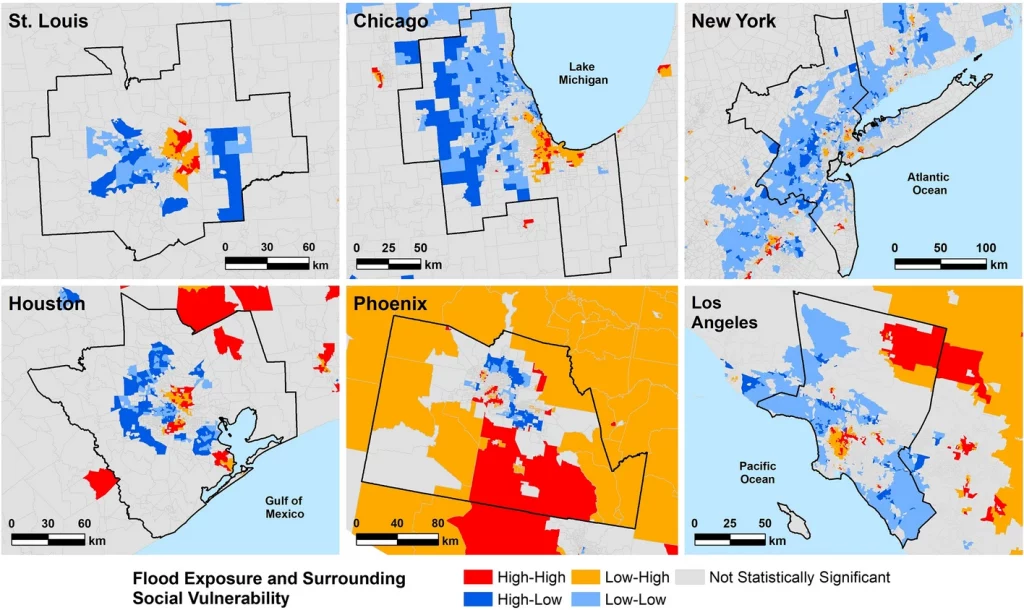Eric Tate, Md Asif Rahman, Christopher Emrich, & Christopher Sampson examine how an increase in extreme precipitation has impacted how populations utilise and occupy land.
This paper, led by Dr Eric Tate at the University of Iowa, investigates social vulnerability and flooding in the United States. With a specific interest in the geography of flood exposure, the paper explores relationships between social vulnerability and physical exposure to flooding.
Drawing on high-resolution flood hazard data from Fathom-US 2.0, the paper maps ‘hotspot’ areas finding a direct link between those at higher risk of flood exposure and an over-representation of racial minorities and mobile-home occupancy within these areas. Through bringing greater attention to this issue, this paper generates crucial discussion around how the US can prioritise investment in key locations to build social resilience against flooding and mitigate risk.
This study is essential in developing our understanding of how, without the correct intervention, lower-income areas will continue to be disproportionately exposed to hazard. As Tate explains, “the prominence of housing and race indicators highlights the multidimensionality of social vulnerability in that its leading causes extend beyond the common focus on income.”

